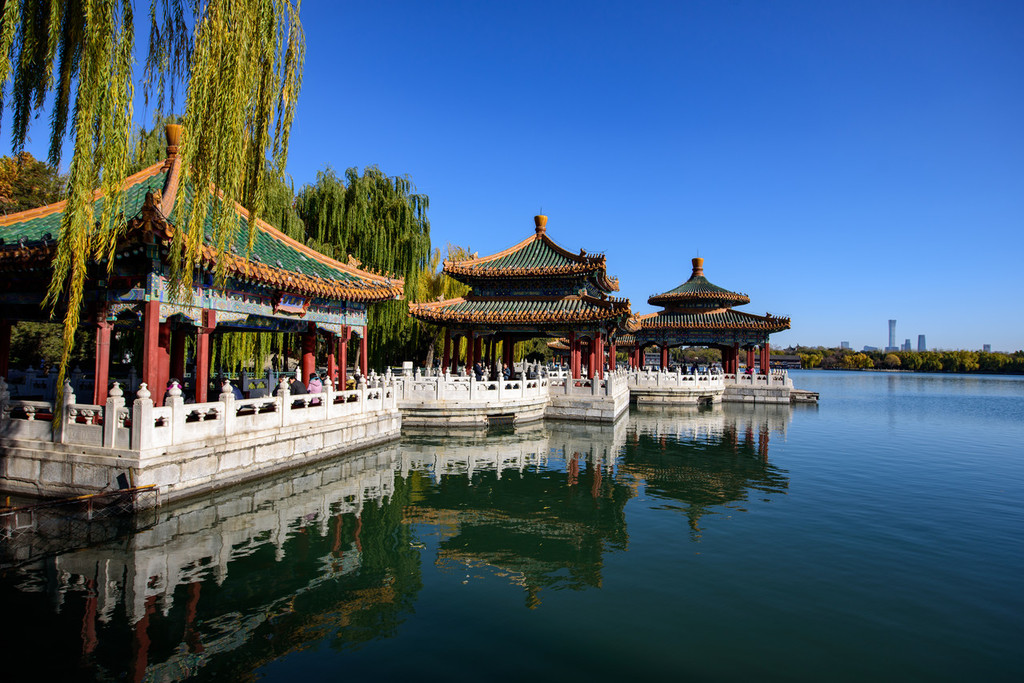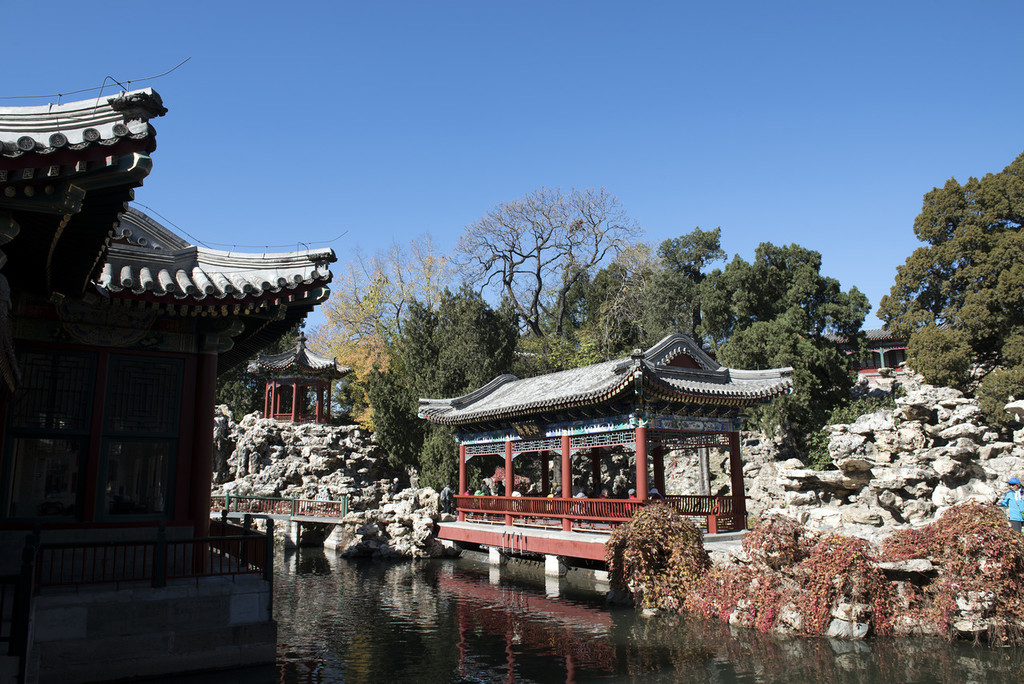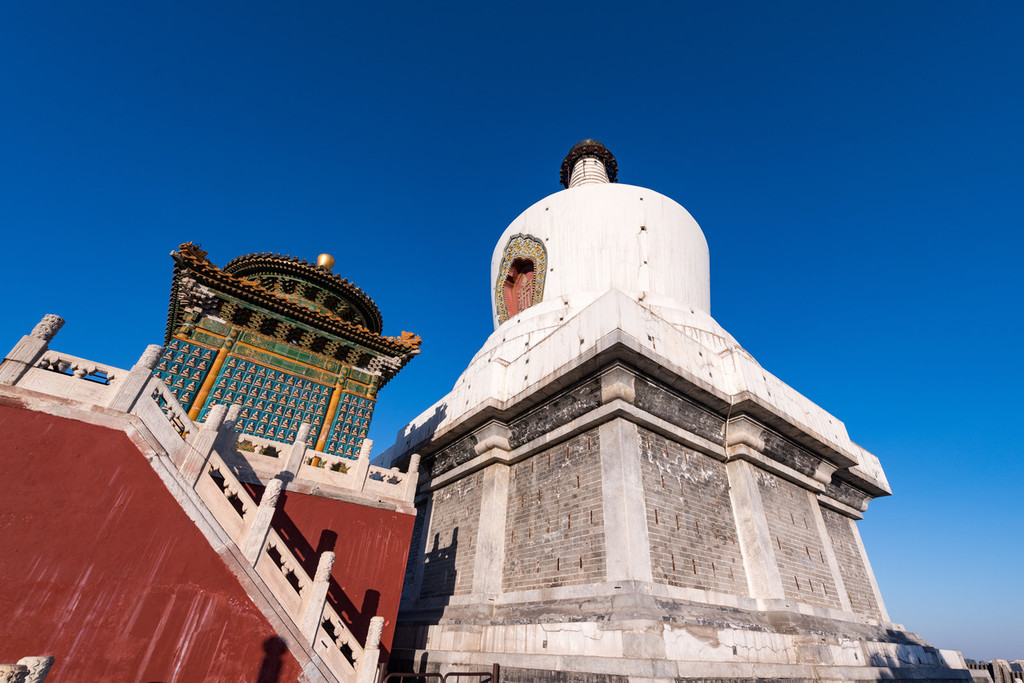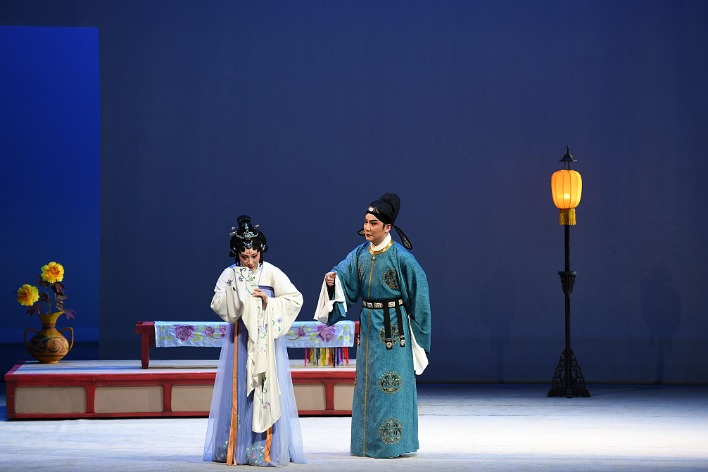Beihai Park

Located in downtown Beijing, to the northwest of the Forbidden City, Beihai Park, literally the Park of Northern Sea, was the northern section of a vast north-south artificial waterscape built for the imperial family in the 11th century. With a history of nearly 1,000 years it is one of the oldest and best preserved imperial gardens in China. It is celebrated at home and abroad for its rich and assorted cultural heritage, unique gardening art, and beautiful lakes and mountains.

The park was built to match the fairyland described in the ancient Chinese myth The Queen Mother of the West (Xi wangmu zhuan). It was built in open country; a pond later formed after the natural southward shift of the Yongding River. Following expansion and reconstruction in the Liao, Jin, Yuan, Ming, and Qing dynasties (916-1911), the present garden gradually took shape.

During the Liao, Jin, and Yuan dynasties (916-1368), Beihai Park was the detached palace of the rulers, while during the Ming and Qing dynasties (1368-1911) it was further exploited as an imperial garden in accordance with Beijing's status as the capital city after the 15th century. Its layout follows traditional gardening theory: man-made isles are built in the water and connected to the shore by bridges and dikes. Buildings and scenic spots are arranged both on the isles and along the shore. The park's 3.9 square kilometers of water accounts for more than half of its total area of 7 kilometers, a blending of land and waterscapes.

The garden was designed following the principle "one pool containing three fairy isles" described in the myth - the pool known as Taiye (lit. the great liquid), accommodating three fairy isles as the Penglai, Fangzhang, and the Yingzhou. The Jade Flower Isle (Qionghua dao) and the Round City (Tuan cheng) in the park and the Xishan Terrace further to the south of the water (today within the administration of Zhongnanhai) respectively symbolize the three fairy isles. The entire vast water surface is simply and boldly named Taiye Lake.


The whole garden is centered by the lake, with the Jade Flower Isle as the centerpiece. Other scenic areas include the northern shore, the eastern shore, and the Round City. There are four gates in the east, west, north and south. Among the well-arranged architectural figures the Nine-dragon Glazed Screen, the Ravine of the Hao and Pu Rivers (Haopu jian, a garden inside the park), and particularly the Jade Flower Isle are the park's crowning jewels and most express the delicate beauty of a Chinese imperial garden.


The history of Beihai Park can be traced back to the Khitan Liao Dynasty, when the emperor Yelv Deguang (r. 938-947) set the auxiliary capital at Yanjing (south of today's central Beijing) in 938. He commissioned the temporary dwelling palace Yaoyu at the White Lotus Pond (today's Taiye Lake) in the northeast of the city, and the Mansion of Great Chill (Guanghan gong) on top of the present-day Jade Flower Isle.





